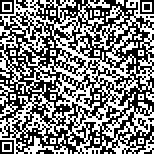| 摘要: |
| 中华管鞭虾(Solenocera crassicornis)隶属于十足目、管鞭虾科、管鞭虾属, 主要分布于我国东南沿海。其富含多种必需氨基酸和矿物质, 高蛋白低脂肪, 但易受微生物污染而发生腐败变质, 需引用基于16S rRNA的高通量测序技术准确测定其微生物群落组成成分变化。以中华管鞭虾为试验材料, 采用高通量测序技术对虾肉的微生物群落碱基进行基因测序, 将产生的碱基序列通过OTU聚类、多样性及相关性分析手段研究了贮藏过程中电场处理后影响中华管鞭虾品质的微生物发育信息和群落组成变化规律。分组为新鲜样本(G0), 2 kV、3 kV及对照组贮藏中期(G1、G2、G3), 2 kV、3 kV、对照组贮藏末期(G4、G5、G6), 通过物种韦恩图、Alpha和Beta多样性以及物种组成分析, 研究不同强度电场环境对中华管鞭虾微生物群落组成的影响。结果表明, OTU聚类分析中优势菌群从属水平看为假交替单胞菌属(Pseudoalteromonas)、假单胞菌属(Pseudomonas)、嗜冷杆菌属(Psychrobacter)和热杀索丝菌属(Brochothrix)等, 其中假交替单胞菌属能够适应高盐浓度环境, 是中华管鞭虾微生物腐败主要致腐菌。贮藏中期微生物物种多样性顺序为3 kV组>2 kV组>对照组(0 kV), 电场能够有效抑制优势菌的生长; 贮藏末期3组物种结构相近, 此时电场对虾肉菌群结构无明显影响。PCoA主成分分析图中发现, 在坐标系中贮藏中期的G1、G2、G3组距离较为接近, 贮藏末期的G4、G5、G6组距离较为接近, 说明在同一贮藏期间的各组微生物种群结构类似。综上, 贮藏前中期低压静电场能够抑制优势菌的生长, 维持微生物物种间平衡并使其物种多样性较高, 且3kV更佳, 贮藏末期时由于优势菌更适应环境, 热杀索丝菌属和肉食杆菌属占比增加, 电场对物种多样性的影响不大。研究结果可为深入探讨影响中华管鞭虾贮藏保鲜效果的微生物群落组成和基础发育信息提供有效依据。 |
| 关键词: 中华管鞭虾(Solenocera crassicornis) 高通量测序 微生物多样性 低压静电场 |
| DOI:10.11693/hyhz20230900184 |
| 分类号:Q789;TS254.4 |
| 基金项目:水产品陆海联动冻藏冷链物流贮运与品质监控关键技术及装备研发专项;“十三五”国家重点研发计划重点专项,2019YFD0901604号。 |
附件 |
|
| ANALYSIS OF BACTERIAL COMPOSITION AND DIVERSITY IN LOW VOLTAGE ELECTROSTATIC FIELD TREATED SOLENOCERA CRASSICORNIS BASED ON HIGH THROUGHPUT SEQUENCING |
|
MU Nan-Zhi1, XIE Chao1, WU Yu-Ting1, ZHOU Zhuo-Ying1, ZHANG Hai-Ling2
|
|
1.Zhejiang Provincial Key Laboratory of Health Risk Factors for Seafood, College of Food and Medicine, Zhejiang Ocean University, Zhoushan 316022, China;2.Zhoushan HSBC Cold Storage Logistics Development Co. Ltd., Zhoushan 316002, China
|
| Abstract: |
| In order to obtain microbial development information and community composition changes affecting the quality of shrimp meat after electric field treatment during storage, using red shrimp Solenocera crassicornis as the experimental raw material, using high throughput sequencing technology, gene sequencing was performed on the microbial community bases of shrimp meat. Through species Wayne diagram, alpha and beta diversity, and species composition analysis, the effects of different electric field environments (2 kV, 3 kV, 0 kV) on the microbial community composition of S. crassicornis were studied. The results showed that the dominant bacteria in OTU cluster analysis were classified as Pseudoalteromonas, Pseudomonas, Psychrobacter, and Bromothrix, among which Pseudoalteromonas was able to adapt to high salt concentration environments and was the main pathogenic bacteria for microbial spoilage in S. crassicornis. During the middle storage period, the order of microbial species diversity is 3 kV group>2 kV group>control group, and electric field can effectively inhibit the growth of dominant bacteria; at the end of storage, the species structures of the three groups were similar, and there was no significant effect of electric field on the microbial community structure of shrimp meat at this time. In the PCoA principal component analysis diagram, it was found that the distances between groups G1, G2, and G3 in the mid storage period were relatively close in the coordinate system, while the distances between groups G4, G5, and G6 in the late storage period were relatively close, indicating that the microbial population structure of each group during the same storage period was similar. In summary, electric fields can inhibit the growth of dominant bacteria before and during storage, resulting in higher microbial species diversity in shrimp meat, and 3 kV is better. At the end of storage, electric fields have little impact on species diversity. |
| Key words: Solenocera crassicornis high throughput sequencing microbial diversity low voltage electrostatic field |
